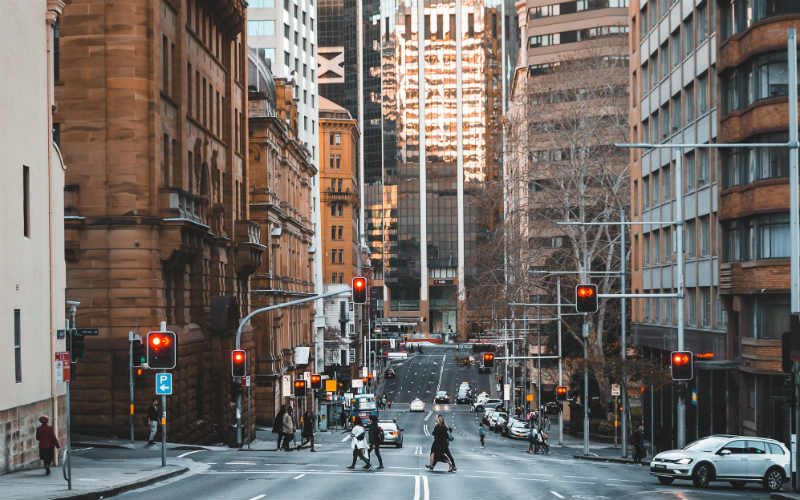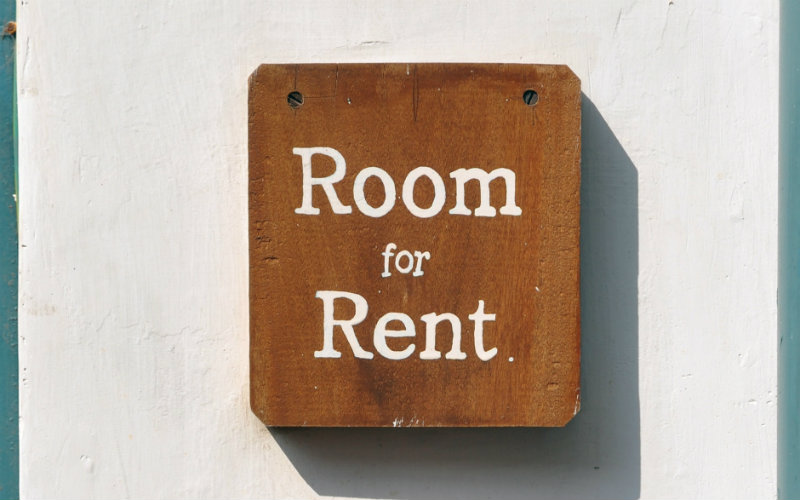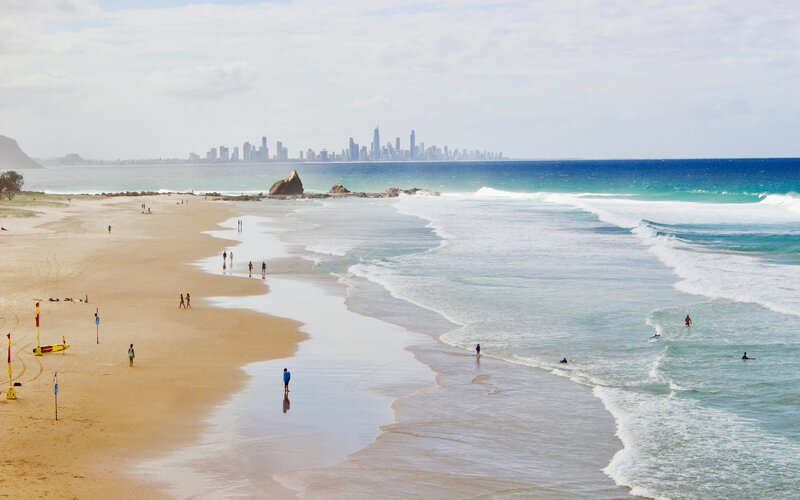When deciding to buy or build, you will need to decide if you have the time you need to dedicate to a project as large as building a property. Building could offer earlier profits and early access to equity, but comes with considerable risk.
Many would-be investors simply do not have the time required to spend researching, calculating and overseeing the process. If you do have the time, make sure you research the costs associated before going ahead with the build.
On the other hand, buying a home can offer significant time savings, but may not offer you the prideful feeling of having built something yourself to your exact specifications. If you’re a fastidious investor, building gives you the chance to get a home exactly how you want it, and if you’re handy you could save some money on some aspects of construction.
Pros of building an investment property
Building an investment property gives you total control over the physical part of the investment process. Buying an existing dwelling will almost always come with some aspects that you wish you could change, or plan to.
Build to meet market demand
Through your own research and consulting with real estate agents, architects and builders, you can cater the property design to what is in demand. Understanding the suburb you build in, features that will add value, and other important aspects such as size and materials can help secure a strong rental yield.
Building an investment property also comes with the advantage of choosing the builder. You can shop around for a fair price and a proven track record on the quality of the build. This control is non-existent when buying an established house.
Tax deductions
There are a number of deductions you can claim on investment properties. New builds also have a certain subset of tax and depreciation considerations. One of the main deductions is Capital works deductions. You can claim capital works deductions for the cost of construction for 40 years from the date construction was completed.
Make sure you understand how the construction phase of the build can be assessed at tax time. Speak to an accountant and carefully read the Australian Tax Office requirements to understand how your investment will be viewed at tax time.
Building could be cheaper than buying existing property
A common reason for buying land and building an investment property is the price may be lower than building an established property in the same area. That’s because most people aren’t able or willing to endure the time it takes to build.
You also need to factor in the cost of your own time. Building a property is an investment not only financially, but also requires a lot of time and energy. It may be unrealistic to balance this with a full-time job of your own.
According to The Urban Development Institute of Australia’s (UDIA) annual State of the Land report for 2021, the median cost of buying a lot of land across the capitals is in the table below:
|
City |
Median lot price |
Stamp duty payable |
|---|---|---|
|
Sydney |
$477,750 |
$17,003 |
|
Melbourne |
$319,000 |
$13,288 |
|
South East Queensland |
$265,000 |
$8,427 |
|
Adelaide |
$183,460 |
$7,902 |
|
Perth |
$215,000 |
$6,872 |
|
Canberra |
$416,000 |
$9,115 |
|
National average |
$312,700 |
$10,434 |
Source: UDIA, Stamp Duty Calculator Australia
To get a rough estimate of buying land and building a property, data from Rider Levett Bucknall detailed Australia’s construction building costs from 2021 for custom-built, single and double-storey dwellings.
|
City |
Lower range cost per sqm |
Average floor area m2 |
Low range total cost |
|---|---|---|---|
|
Sydney |
$1,960 |
220.5 |
$432,180 |
|
Melbourne |
$1,860 |
246.4 |
$423,808 |
|
Brisbane |
$1,800 |
231 |
$415,800 |
|
Adelaide |
$1,580 |
199.2 |
$314,736 |
|
Perth |
$1,400 |
236.5 |
$331,100 |
|
Canberra |
$1,700 |
242.5 |
$412,250 |
|
National average |
$1,716 |
229.4 |
$393,650 |
Source: Rider Levett Bucknall’s Construction Cost Indicator 2021
These estimates should be used as a rough estimate only, and do not factor in delays in build times, added costs for custom builds or expensive materials, smart home features, and so on.
Using rough estimates, combining the median lot cost, stamp duty, and low range cost of the build, below is a breakdown of total build costs across capital cities.
Considering ABS data suggests the national average dwelling value has surpassed $900,000, some home builders could come out ahead. Of course, these are all averages and should be taken with a grain of salt.
|
City |
Total build cost |
|---|---|
|
Sydney |
$926,933 |
|
Melbourne |
$756,096 |
|
Brisbane |
$689,227 |
|
Adelaide |
$506,098 |
|
Perth |
$552,972 |
|
Canberra |
$837,365 |
|
National average |
$711,448 |
Build equity
Finding land that is fairly valued, and building a high quality property, could result in a faster gain in equity than if you bought an existing dwelling. This isn’t guaranteed, however.
What this means is after the build is complete, you can return to your lender and have the property re-valued. Your lender may re-value the property at a price higher than the initial value during your application. If this is the case, you have instantly added value and subsequently equity on the property. The ‘sweat equity’ might now seem worth it.
Also read: Costs of building a home
Cons of building an investment property
Limited options for location
The first challenge when buying land is finding a location that will be attractive to tenants in the future. Land in established areas, close to capital cities is limited. The result is a hefty price tag on land in established areas, or a more reasonable price tag in a regional area.
Alternatively, you can knock down an existing property, which comes with its own set of challenges and costs. This decision is one to consider before you commit to the project of building a house.
The things you can’t control
As with any investment property, make sure you understand the council permits, city regulations and state legislation that can impact your potential for building. These can be things like height restrictions or footpaths or trees that can’t be removed.
Additionally, a vacant area with lots of land for sale, could see a new high-rise complex, hotel or other new builds that could influence the supply in the area. Lots of similar houses on similar blocks in a new land release could make competition more fierce, resulting in some negotiating power for buyers and tenants.
In addition, a new apartment block could pop up in front of your investment property, influencing views or lowering the value of your property. This risk is evident in all investment properties, however vacant land attracts other would-be investors and home buyers with their own set of priorities.
Prices and time can easily blow out
Any fans of ‘The Block’ or ‘Grand Designs’ will be accustomed to seeing budgets blown out of the water. Similarly, the estimate of time to build a property is just an estimate. Supply of materials, weather, or other issues can easily see the time and subsequently the cost of your project skyrocket.
You also will be dealing with a long list of people during the process - architects, builders, electricians, plumbers, painters and so on. All of these people play an important role in the process, but all have their own schedules, commitments and costs that won’t perfectly align with one another. These factors all contribute to the time it takes to finish a property build.
You need to consider the financial, mental and time costs of these aspects of the build.
Delay in rental income
The longer your project takes to complete, the longer you are waiting to see a return on your investment. While your property is under construction you will most likely be making loan repayments, without any income from the property. Luckily many construction loans tend to be interest-only until the build is completed, by which point in turns into a regular home loan paying principal and interest.
When you buy an established house and land, you can theoretically be getting income from the property straight away. A property can take over a year to build, meaning a year of loan repayments with no income from tenants renting the property. You need to understand how long you can financially afford to not see any return on your investment before committing to the building process.
Pros of buying an investment property
You get what you pay for (usually)
If you have done your research, understand the suburb and property type you are investing in, then you may benefit from buying an established investment property.
A pre-purchase inspection will give you an idea of what may need replacing or upgrading. Additionally, buying an established property may be the only way to break in to a certain suburb.
Location
An established home in an established neighborhood with good schools, parks, cafes, restaurants etc. won’t be as hard to find as a vacant block in those suburbs. Buying into the suburb of your dreams will be much more achievable if you are considering established properties.
There is an extremely limited supply of land in built-up, inner city suburbs. If one does become available, it will come at a premium cost.
Smaller deposit
You may need a larger deposit to secure a construction loan to allow you to build a property from scratch. Additionally, many investors may opt for an interest only investment loan to secure an investment property, which can be cheaper to manage in the short term while finding tenants and dealing with other costs.
Investment table
A much faster process
Buying land and building a property can take years if you aren’t prepared. Buying an established property can take as little as a couple of weeks to sign a conditional contract and have tenants renting out the property. Some properties will already have tenants in place when you buy, meaning there’s virtually no time your investment sits vacant.
Cons of buying an investment property.
More expensive to buy
The table below shows the rough estimate of land and construction costs, compared to median housing values from CoreLogic for capital cities as of December 2021.
|
City |
Total build cost |
Median housing value |
|---|---|---|
|
Sydney |
$926,933 |
$1,360,543 |
|
Melbourne |
$756,096 |
$986,992 |
|
Brisbane |
$689,227 |
$757,194 |
|
Adelaide |
$506,098 |
$608,624 |
|
Perth |
$552,972 |
$552,158 |
|
Canberra |
$837,365 |
$999,755 |
|
National average |
$711,448 |
$877,544 |
Source: CoreLogic
Based on this rough guide, it is evident that most capital cities would be more expensive to buy a median valued house rather than buy land and build. It is important to treat these figures as a rough estimate only.
Image by Ralph Kayden via Unsplash

Ready, Set, Buy!
Learn everything you need to know about buying property – from choosing the right property and home loan, to the purchasing process, tips to save money and more!
With bonus Q&A sheet and Crossword!



 Harrison Astbury
Harrison Astbury
 Denise Raward
Denise Raward


 Harry O'Sullivan
Harry O'Sullivan

